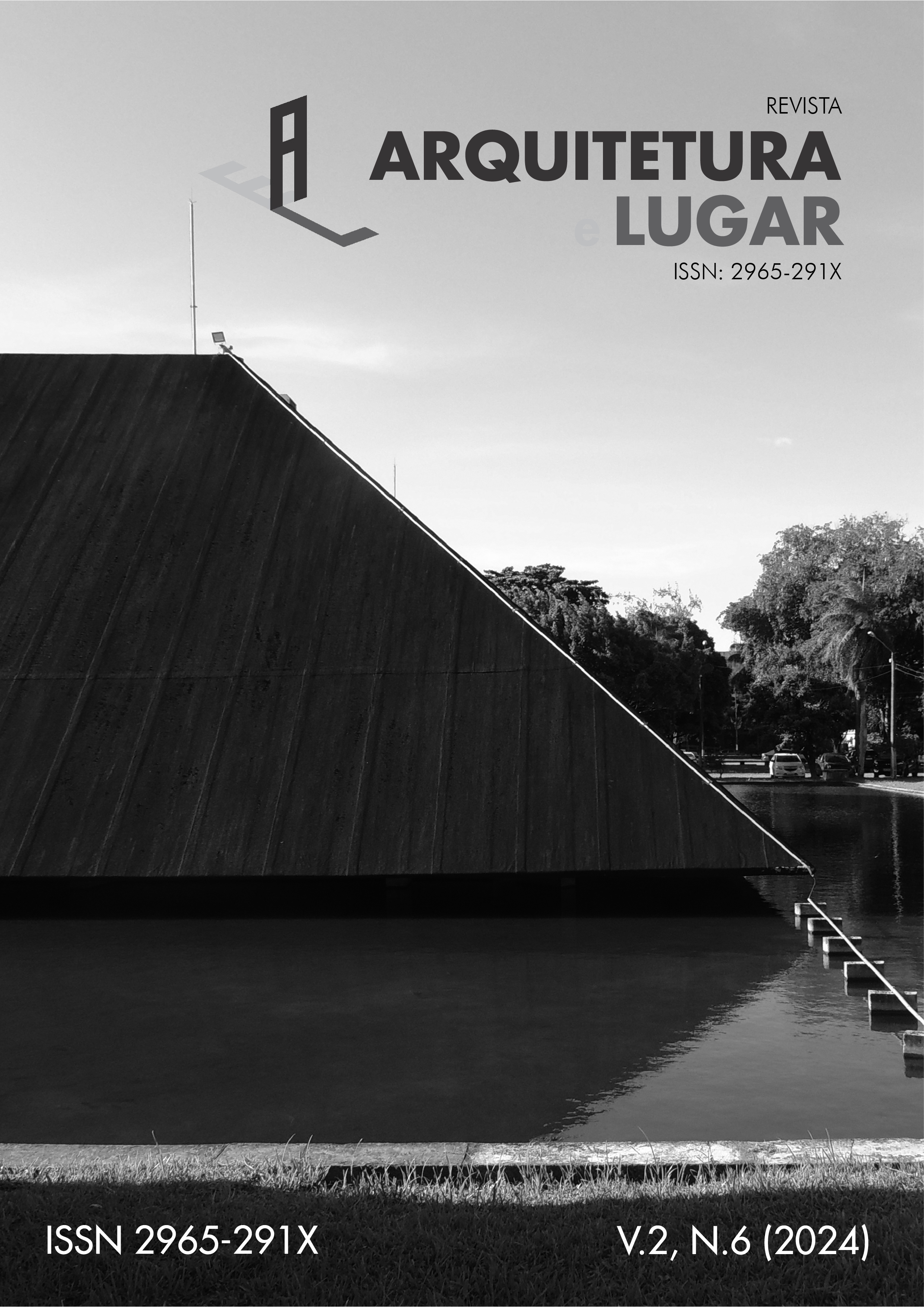FÁBRICA MARQUES DE ALMEIDA
INTERVENCIÓN EN EL PATRIMONIO DEL AGRESTE PARAIBANO
Palabras clave:
patrimonio-industrial, intervención, preservación-históricaResumen
Este trabajo aborda la preservación del patrimonio industrial, tomando como estudio de caso la antigua Fábrica Marques de Almeida, en Campina Grande, Paraíba. La fábrica, inaugurada durante el ciclo algodonero, se encuentra actualmente en estado de eliminación por abandono y cambios de uso. El objetivo es realizar un estudio patológico para diagnosticar el daño estructural y estético, manteniendo su integridad. La metodología incluye inspecciones planificadas para identificar áreas deterioradas y el uso de un Mapa de Daños, propuesto por Tinoco (2009), que concentrará las manifestaciones de limitaciones en una representación gráfico-fotográfica, consolidando descubrimientos sobre cambios estructurales y funcionales, así como Fichas Técnicas de Identificación de Daños (FID's), documentos normalizados que registran gráficamente los daños, opcionalmente como retrato fiel del estado de conservación. Rehabilitar la fábrica no sólo preservaría su historia y arquitectura, sino que también podría catalizar el desarrollo socioeconómico local.
Descargas
Citas
AFONSO, A. A. M. Notas sobre métodos para a pesquisa arquitetônica patrimonial. Revista Projetar – Projeto e Percepção do Ambiente, v.4, n.3, p. 54-70, 12 dez. 2019.
ARAÚJO, J. B. Breve histórico acerca da representação do algodão no desenvolvimento da cidade de Campina Grande-PB. In: V Encontro Nordestino de História, Recife - UFPE, outubro de 2004.
AZEVEDO, E. B. Patrimônio industrial no Brasil. Revista Arq.Urb, n. 3, p. 11-22, 2010.
CHOAY, F. A alegoria do patrimônio. São Paulo: Editora UNESP. 1999.
FRAMPTON, K. Studies in tectonics culture. Cambridge. Massachussets. The MIT Press.1995
HELENE, P.; BOLINA, F. L.; TUTIKIAN, B. F. Patologia das construções. São Paulo: Oficina de Textos, 2019.
ICOMOS. Carta de Burra. Burra, Austrália: 1980.
KÜHL, B.M. Preservação do Patrimônio Arquitetônico da Industrialização. Problemas teóricos de restauro. Cotia, Ateliê / FAPESP, 2009, pp. 59-100.
LICHTENSTEIN, N. Patologia das construções. São Paulo: Bo - letim Técnico Nº06/86 da Escola Politécnica da USP, 1986. Disponível em: http://www.pcc.poli.usp.br/files/text/publications/ BT_00006.pdf
TINOCO, J. Mapa de danos. Recomendações básicas. Recife: CECI/MDU, 2009
VIÑAS, Salvador Muñoz. Contemporary theory of conservation. Oxford e Burlington: Elsevier ButterworthHeinemann, 2005.
ZANCHETI, S. M.; HIDAKA, L. A construção da significância cultural das cidades patrimônio da humanidade. In: 1º Colóquio Ibero-Americano Paisagem Cultural, Patrimônio e Projeto: Desafios e Perspectivas, Belo Horizonte, agosto de 2010.
Descargas
Publicado
Cómo citar
Número
Sección
Licencia
Derechos de autor 2024 Revista Arquitectura y Lugar

Esta obra está bajo una licencia internacional Creative Commons Atribución-NoComercial-SinDerivadas 4.0.
Los autores que publican en esta revista aceptan los siguientes términos:
1. Los autores mantienen los derechos de autor y otorgan a la revista el derecho de primera publicación, estando la obra licenciada simultáneamente bajo la Licencia Creative Commons Atribución-No Comercial-SinDerivadas 4.0, que permite compartir la obra con reconocimiento de autoría y publicación inicial en esta revista;
2. Los autores están autorizados a celebrar contratos adicionales por separado, para la distribución no exclusiva de la versión del trabajo publicado en esta revista (por ejemplo, publicación en un repositorio institucional o como capítulo de libro), con reconocimiento de autoría y publicación inicial en esta revista;
3. Se permite y se anima a los autores a publicar y distribuir su trabajo en línea (por ejemplo, en repositorios institucionales o en su página personal) una vez finalizado el proceso editorial, ya que esto puede generar cambios productivos, así como aumentar el impacto y la citación del trabajo. trabajo publicado (ver El efecto del acceso abierto);
4. No se recomienda publicar y distribuir el artículo antes de su publicación, ya que esto puede interferir con su revisión ciega por pares.




